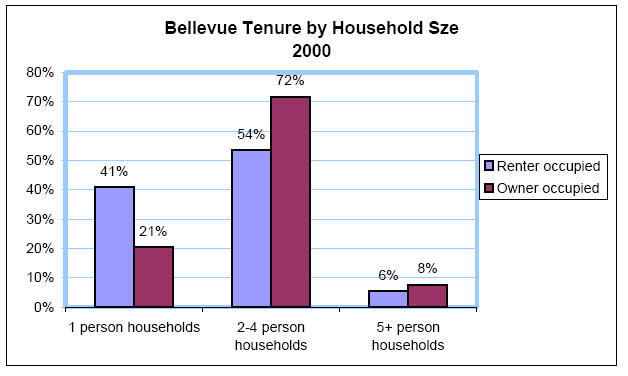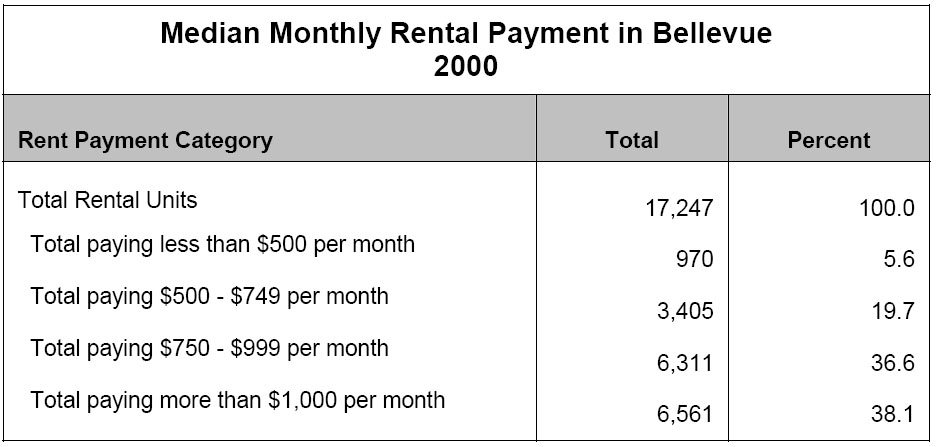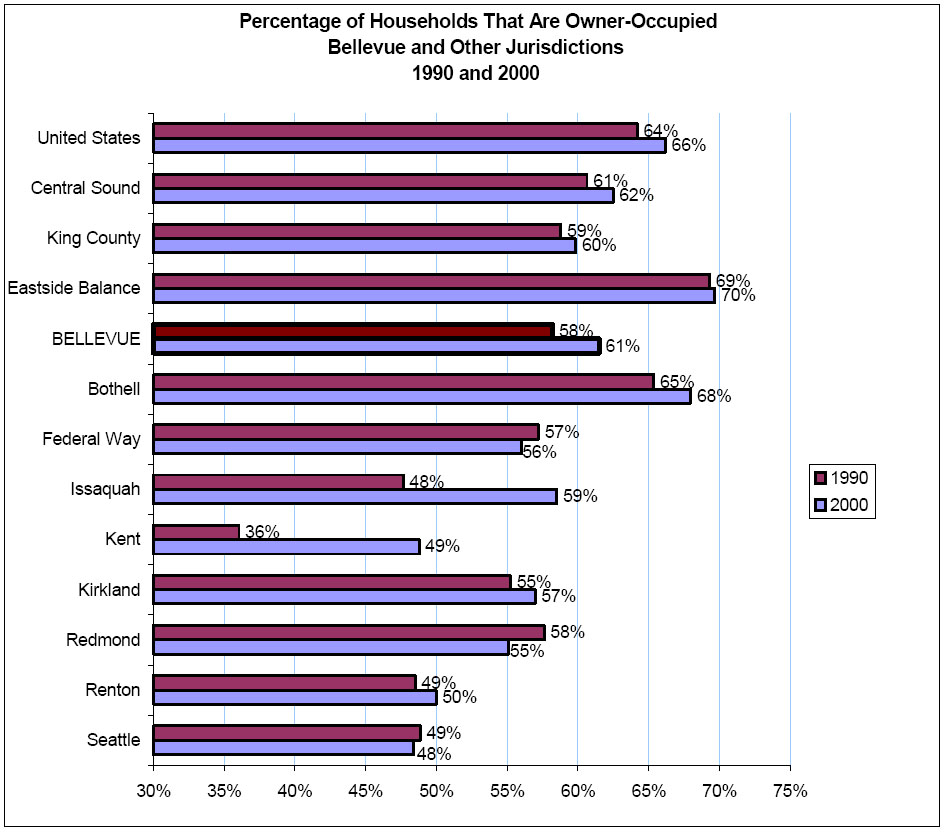|
These tables show an interesting comparison between the age of owners and renters and size of household. Renter occupied households tend to be younger and more likely to live in a one person household. This is to be expected since they are most likely the ones working at the high-tech companies, living in the downtown rental area, and do not yet have a family.
|
|
|
|
Median housing Prices rose 54% between 1990 and 2000 from $192,800 to $299,400. Housing prices in
Bellevue
rose by 9 percentage points above the rate of inflation while the average median income rose less than the rate of inflation. So, from 1990-2000 the cost to own a home increased at a higher rate then the average median income increased resulting in homeowners paying a larger percentage of their income to their mortgage. The average mortgage payment in 1990 was $1,420. In 2000 it was $1744. This represents a 23% increase.
Rental housing prices also increased during this same period of time. They increase from $610 to $916. The table below shows that as of the 2000 census almost 75% of all renters spent $750 or higher on their rent. (Two bedroom units were the most common type of rental unit.)
Bellevue
city planners are keeping all housing options open for their residents. In 1990, approximately 400 units were located downtown. Today the downtown area is home to more than 1,800 households. Looking ahead the city could build more than 15,000 condominiums and apartments in the downtown area which would house more than 22,500 people. The housing market in
Bellevue
is so competitive because there is a strong urban economy with well paying jobs. (Microsoft and Boeing are a few examples.)
Bellevue
is moving towards a more urban setting with more households located downtown due to the large number of high-tech companies that have located there. These companies are fast-paced with round-the-clock operations making downtown living more convenient. |
|
|
|
61% of
Bellevue
households owned their own home in 2000. This is consistent with the national average, but much higher than some of the other cities in the region like
Kent
,
Kirkland
and
Redmond
. There are two reasons that
Bellevue
has a high percentage of home ownership. Many of the areas that were annexed into
Bellevue
between 1990-2000 were already well established suburban areas with high numbers of home ownership. Secondly, many of the multi-family units that were built in the downtown area were built as owner occupied condominiums.
|
|
|



